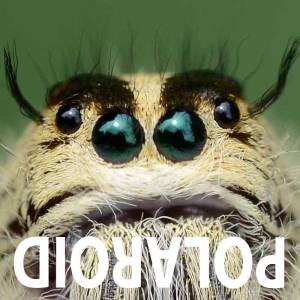Lynx spider eyes
oxyopes
I know, 'not another spider blip'! Well, I am in the middle of an 'eye' series and spiders seems to be all the blip monster is giving me at the moment. I could have milked it and put up another jumper eyes shot, but resisted.
Since the start of this series, I have been trying to get a macro of the lynx spider's eyes, but they just seem impossible to get a focus on. Today is the best I have managed so far, but you can expect more of this arachnid once I get the MakRak up and running.
Most spiders have eight eyes but some families have only six. Each family of spiders have a different eye layout, depending on their M.O. The lynx spider, like yesterday's jumping spider, is a hunter and does not build a traditional web to catch its prey, but hunts by sight. So, sight being important, it has evolved a better set of peepers than your average web builder.
Spiders have two types of eyes. Only the main two eyes, front and center are capable of forming and image, the rest can only sense light and dark. Some have a reflective layer inside which magnifies the light source and helps determine the direction a movement is coming from. When you shine a torch at night, you can often see the eyes of a wolf spider, this is light bouncing back from this reflective layer.
The spider's eyes are of a similar construction to our own, comprising of a lens and retina. They are referred to as 'simple' eyes as opposed to the 'compound', multi-faceted eyes of insects. Jumping spiders have particularly good eyesight and it has been calculated that their eyesight is a factor of ten better than dragonfly sight, which is the best of the insect world. Our own sight is a factor of five better than jumpers.
So why the hexagonal layout of the lynx eyes? Well, I could not find any information written down in my research, but it is obvious that this arrangement gives good all round sensing of movement. After a year of studying insects for an hour a day, I have seen a lot of spider action, the most impressive was the lynx. It leapt into the air and pulled down a moth that just happened to be flying by. The first time I saw this, it was a bit shocking!
The thick spines on the legs help to grip the prey, but if you look closely, you will see a secondary set of hairs. These tiny hairs are used for hearing and tasting, as spiders lack both these senses as we know it. Some of the hairs have chemical receptors to taste the air, others can sense sound waves by movement.
Dave
- 18
- 2
- Nikon D7000
- f/8.0
- 105mm
- 400

Comments
Sign in or get an account to comment.


